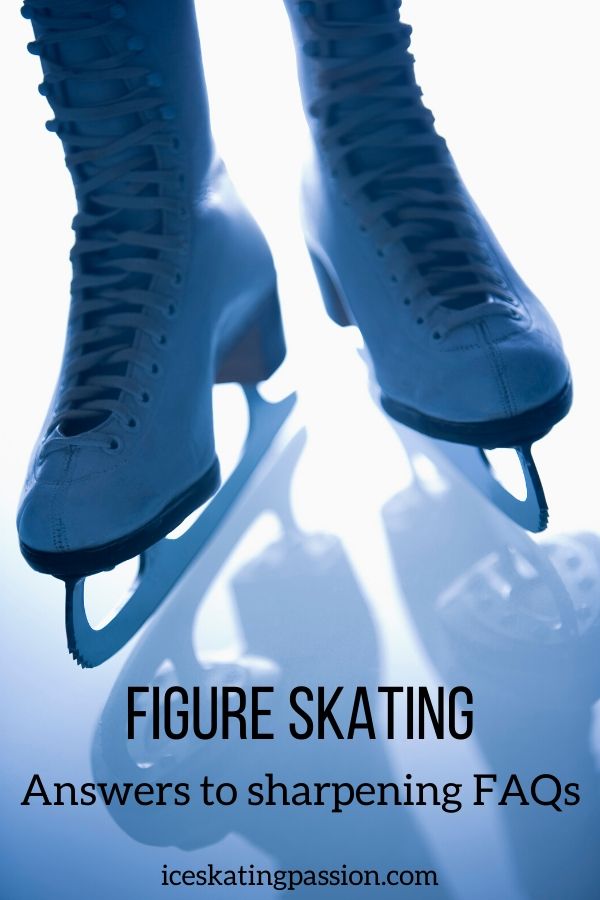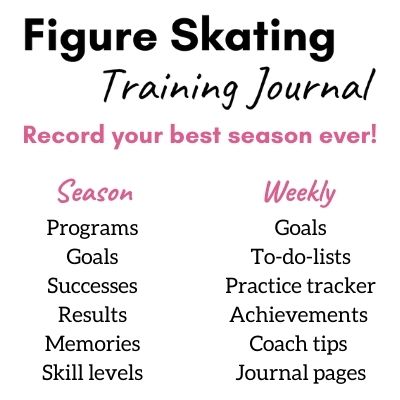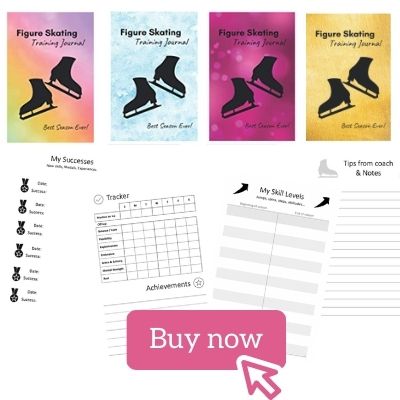Let's have a look at ice skate sharpening. It is an essential part of taking care of your skates.
Let me help you better understand what it is, when you should be doing it, why and how. All your non-technical questions answered about figure skate sharpening!
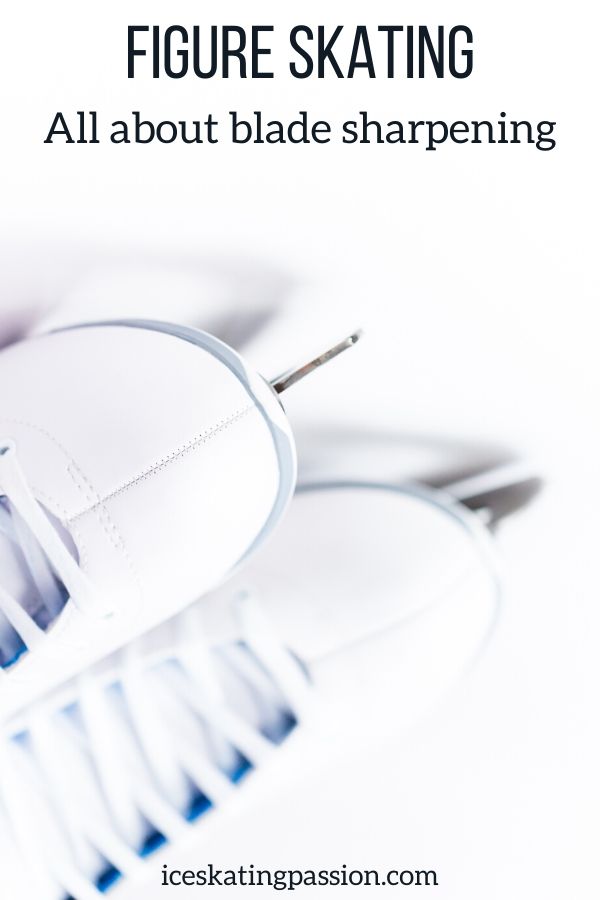
This article contains affiliate links. If you purchase using my link, I get a commission at no extra cost to you (learn more).
WHY should you sharpen ice skates?
Why do you need to sharpen your blades?
Well, the answer is pretty straight. Just like a chef cannot do what he wants to do with the vegetables and salad things with a dull knife, similarly, a figure skater cannot do the moves they want to, and the lithe fluidic choreography of movement on a dull pair of figure skating blades.
Sharpening is an essential step in taking care of your skates.
When your blades slide on the ice uncomfortably, it is an indication that it is time you sharpened them. More on this in the coming sections, but the point to note is, the hollow or the portion of blade between the inside and the outside edges of the blade is where the slide happens. When the ice melts the kinetic energy gets converted to heat and makes the blade glide on the ice.
The sharper the edges are, the easier they melt the ice and the hollow will slide smoothly, making your skating fluid.

Sharpened blade holding on the edge
What happens if you don’t sharpen your skate?
When you do not make the edges sharp, they won’t melt the ice as rapidly. If the ice is slow to melt, there wouldn’t technically be a hollow to slide on and the motion of the figure skater will be sluggish and not really elegant.
If you do not sharpen your skates, you can also slip and slide and won’t be able to make turns on the ice and will also be prone to falling hard on the frozen sheet of water. You will find it challenging to stop as well. This can hurt badly. Sharp skates are crucial for a fun and safe skating sessions.

Want to learn more about the blades (styles, profiles, materials, how to choose them...)? Check out my detailed article.
HOW OFTEN - Figure skate sharpening
Do new figure skates need sharpening? Are they sharpened by default?
Yes. New figure skates need to be sharpened. When the brand is shipping the skates, they send dull blades so that there is no issue when in transit and there are no injuries when they are shipped.
They are not sharp when sent, so you need to sharpen them before you begin skating.
How often should I have my blades sharpened?
Here are a few indications:
- How are you using the skates? It depends on the figure skating level. The more advanced the skater is, the more stress the blades go through as the turns are faster and tighter, the stopping is abrupt, and the speed is higher. For beginners, the sharpening frequency can be lower as they won’t do all of the above.
- How heavy is the skater? The heavier the skater is, the more frequently will the blades require to be sharpened as the pressure is higher.
- How hard or soft is the ice for skating? The outdoor rinks have a harder ice and the blades dull faster on this kind. The indoor rinks where the ice is softer, the blades may not need sharpening very frequently.
Between every 2 weeks and every 6 months depending on the frequency of use and the above criteria. I give you some indications below to help you realize when it is necessary.
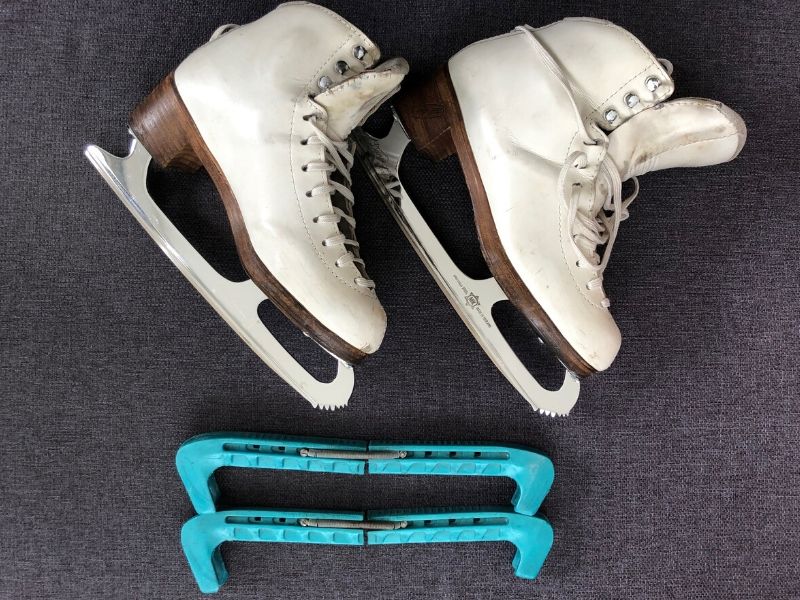
How to protect the blades between sharpening
You can prolong the sharp state of the blades and reduce the frequency of sharpening by following these tips:
- Use a Skate Guard - You must retain the sharpness of the blades by making sure that they are used only on the ice. Never walk around on a hard floor, let your blades on gravel or mud, or hurt the blades in any way. Buy blade guards to keep the blades sharp longer. Check out my article with tips on the best skate guards.
- Vary the stop style - The way you stop when on skates decides how much wear and tear will your skates endure and how long the sharpness will remain. Every stop puts a specific kind of stress on the blade and you must vary the styles to avoid the blade from wearing out on the same spots.
- Don’t let them rust - Any metal object will begin to underperform if you let it rust, and the same applies to the blades as well. Dry them by wiping with a clean cloth before your store them to avoid rust built-up. Most towels at the rink are boring, check out these personalized options to make drying your blades more fun!
When not to have my blade sharpened?
Never have your blades sharpened just before a test or a competition.
It should be at least a few training sessions before so that you have time to adapt and blunt them a little.
HOW MUCH - not enough or too sharp blades?
How can I tell when my blades need sharpening?
There are a few signs that you can check and a few tests you can do if you need to know if your skates need sharpening.
- Are you slipping sideways when you skate or try to stop? Is the tail of the blade slipping often? When the dullness gets worse, you might feel the heel of the skate slipping out too.
- Fingernail test: Try and drag your fingernail over the blade in 3 or 4 spots of the blade. This should be done to both the blade edges, the inside and outside. If there is a little bite sensation the edge is nice and sharp. If the nail seems to slide smoothly, the edges are rounded.
- When was the last time you sharpened them? If you don’t remember, it is probably time to sharpen them again. Typically, if you are skating 4-6 hours a week, once a month or every 2 months sharpening should be just fine.
- Run a finger over the blade, but not lengthwise! Run it widthwise and if you can distinctly feel two different edges with a definite bite to them, your blades are fine.
- How does the skate feel on the ice? Is it smooth and gliding or do you feel sluggish? The deeper the hollow, the easier it is to move on the ice. Are you struggling to stop while you’re skating? Are you needing to push harder to get your move on? If yes, it's time you sharpened your skates.

figure skate sharpening: fingernail test
Can skates be too sharp?
Yes, they can become too sharp when being sharpened.
But it depends on the skater how sharp they want the skates to be. The blades can get too sharp if the one sharpening them is a novice unexperienced professional (or if you do it yourself without knowing fully about it).
What to do if they are too sharp?
Sometimes, the blades can get too sharp from proper sharpening. Here is how you can optimize the sharpness.
- You can do a variety of stoppings and breaks to wear the blades evenly into perfectly optimized sharpness.
- Dull the skates by doing a few rounds and laps around the rink. The extra sharpness can be dulled into perfect smoothness this way. When doing this, mindfully distribute all your weight evenly on the skate.
- Rubbing the skate blade on the plastic of the board in the doorway of the rink to dull them evenly. Go straight up and down when rubbing so that the dulling is even. Don’t dull it too much by pressing in the blade too deep into the plastic and pushing outward.

Vary the styles of stops
How is figure skate blade sharpening done?
How do you sharpen figure skate blades?
One must take the figure skates to a specialist or a professional who will first look at the skates and determine if they really need a sharpening. The edges and the hollow need to be observed with care and it is a specialists’ job to maintain the hollow properly. You must refrain from it if you are an amateur or not trained in the job.
You must be careful before you let someone do it as it is a skill which one has to develop, and it comes with experience. These skates are different from hockey skates. A warning against the sharpeners at the rinks – the skates might get ruined. The automatic machines are no good. Ask your teacher or coach, ask for recommendations or entrust the responsibility to them just to be safe.
Make sure to get recommendations from your coach about sharpener and what depth of sharpening to have.

Sharpening figure skates
How much does it cost?
Sharpening is a low-cost affair, which can cost differently in different countries.
- In the UK, it costs as low as £5 to £8.
- In the USA, it can cost around $6 to $10.
- In Canada, it can cost from 6 CAD to 10 CAD
Do you need a machine or are the hand sharpeners any good?
You do need a good machine sharpening, because they are designed to give you proper sharpness. Hand sharpeners would not give you the desired outcome unless you are a pro at hand sharpening. But if there are just a couple of spots to make better or touch up, hand sharpening is fine too. However not everyone should do touch up. You need to understand what you are doing.
This is what a manuel sharpener can look like
Technical details – intro
Let's not go into too much details here. This is not an article to teach someone how to use the machine. You can find detailed articles about it online.
But here is a short intro for those interested.
The hollow at the bottom are rounded and given edges which are crucial for figure skating. The curvature can be from 5/16th of an inch to about 2 inches – this depends on the skater’s weight and the style they skate in. The jumps are also a crucial deciding factor. Ice dancer and figure skater do not need the same sharpening.
The radius of the hollow is the concave bend of the blade which is obvious when you look down the length as you keep the skate at eye level.
The more the edges of this hollow are obvious, the sharper are the edges. The deeper the hollow is, the more you can feel the sharpness of the blades.
Beginners are better off with a larger radius of hollow. As the skill gets better, you can reduce the radius further.
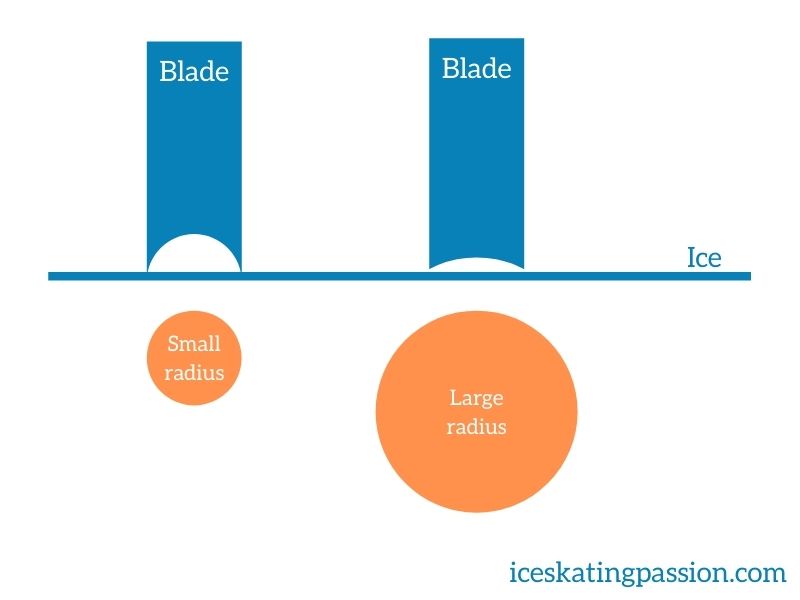
Small radius = Deep hollow
More surface contact area with ice & More Pronounced Tips
=
- Sharper Feel
- More grip
- More drag
Large radius = Shallow hollow
Less surface contact area with ice & Less Pronounced Tips
=
- Less sharp Feel
- Less grip
- Less drag
You might also be interested in:

